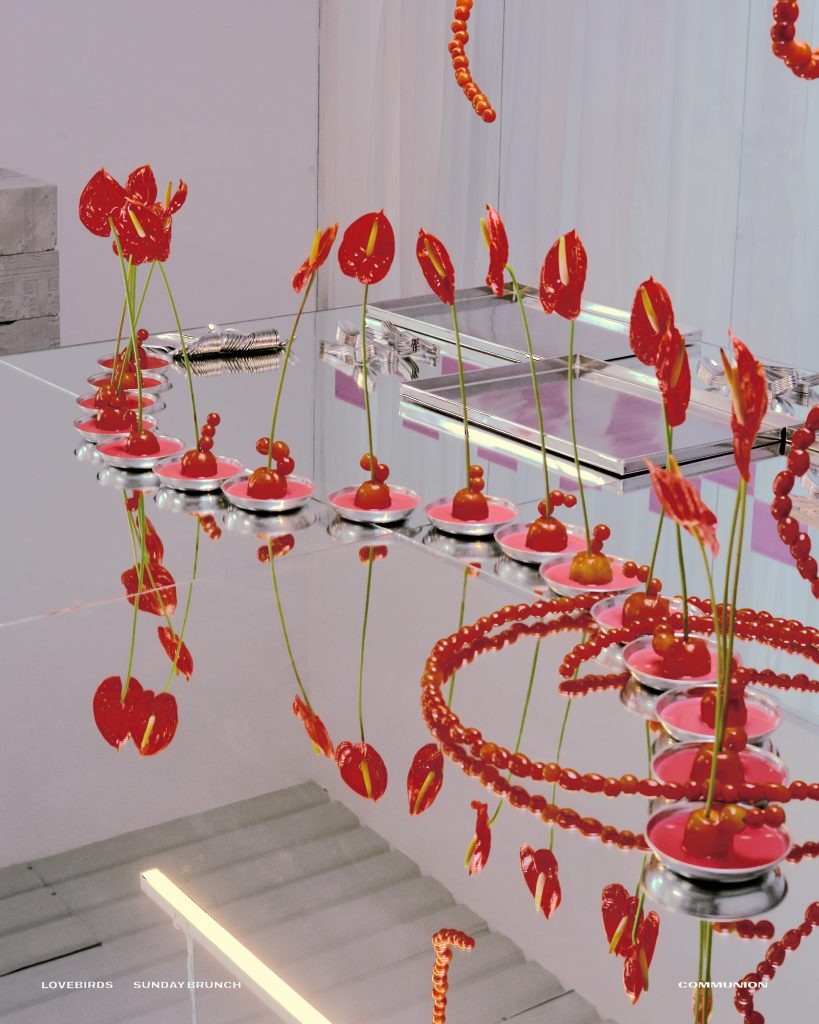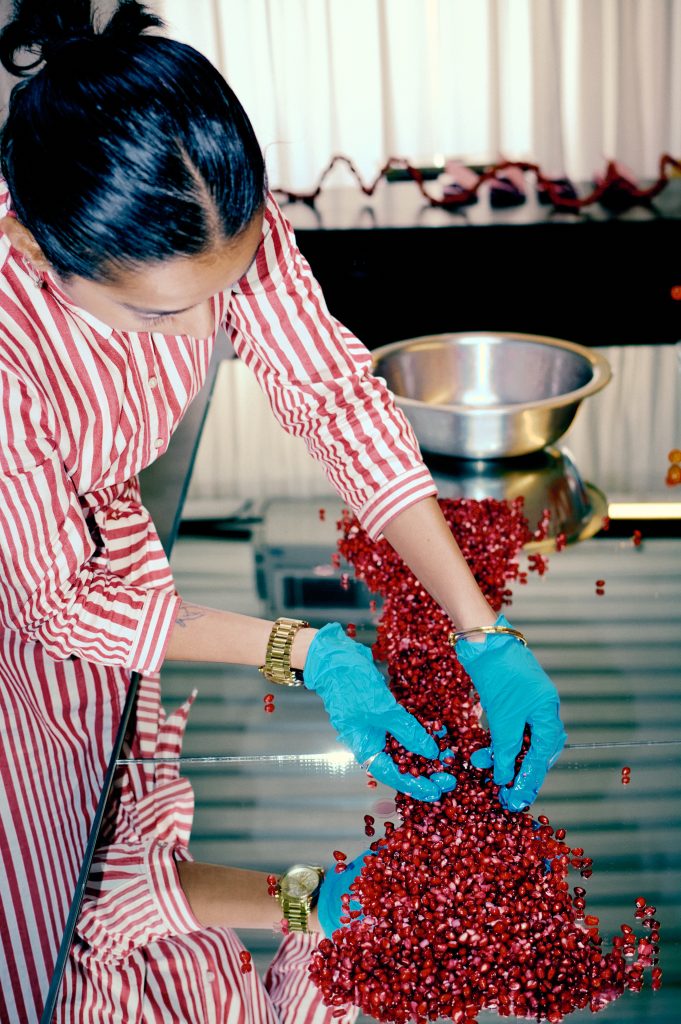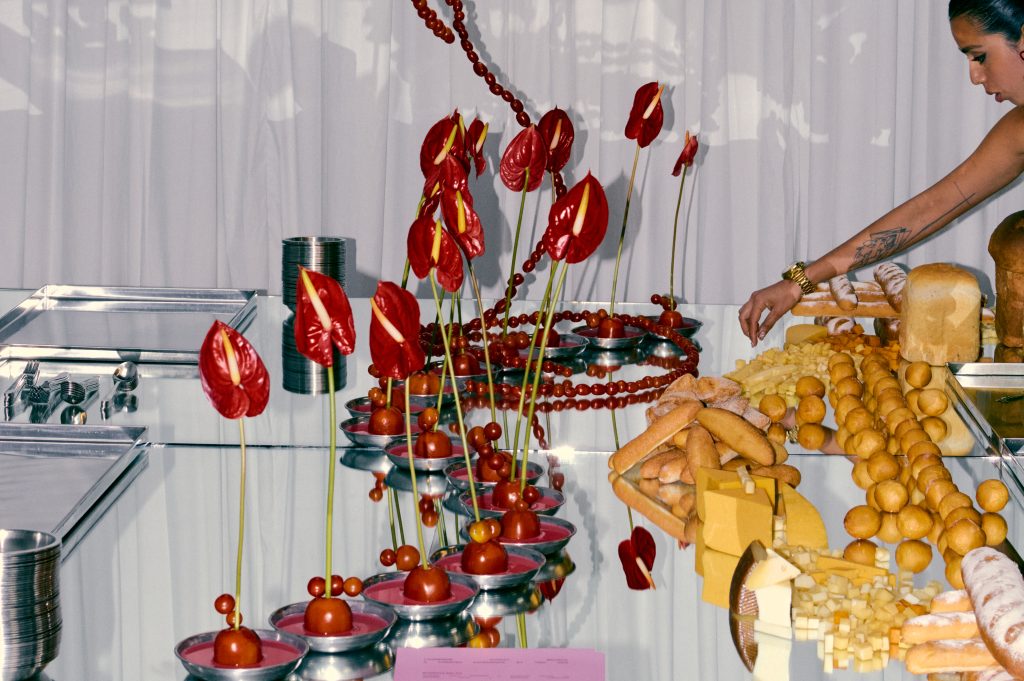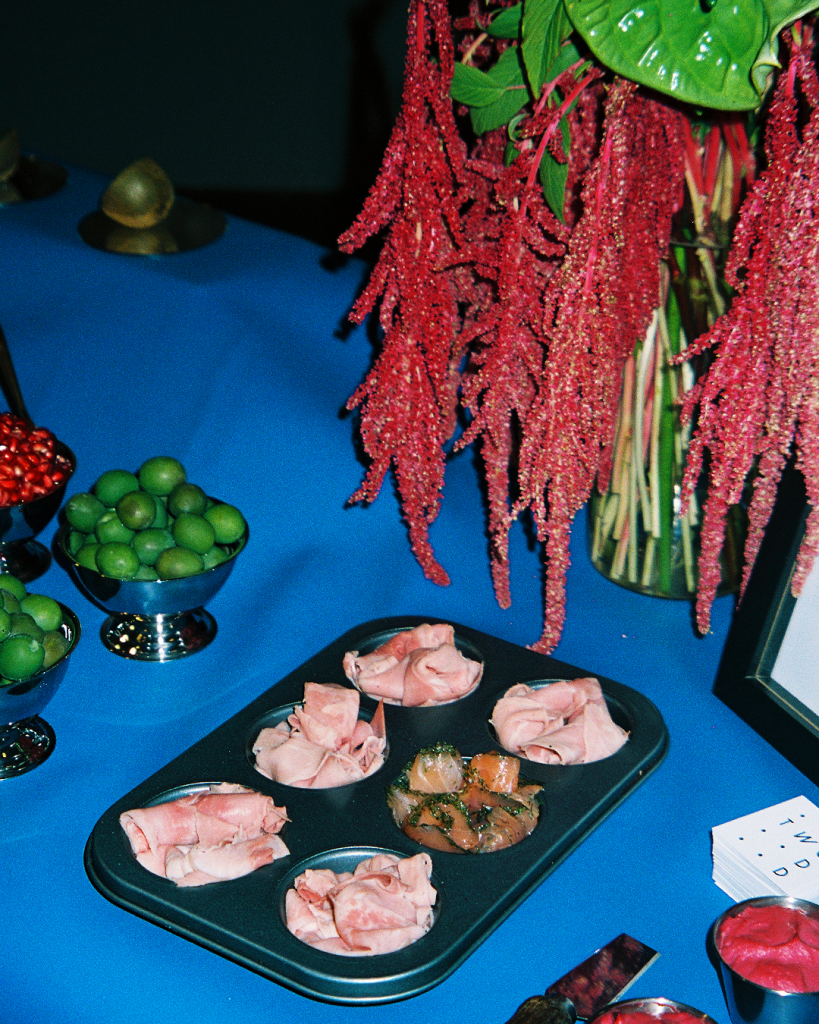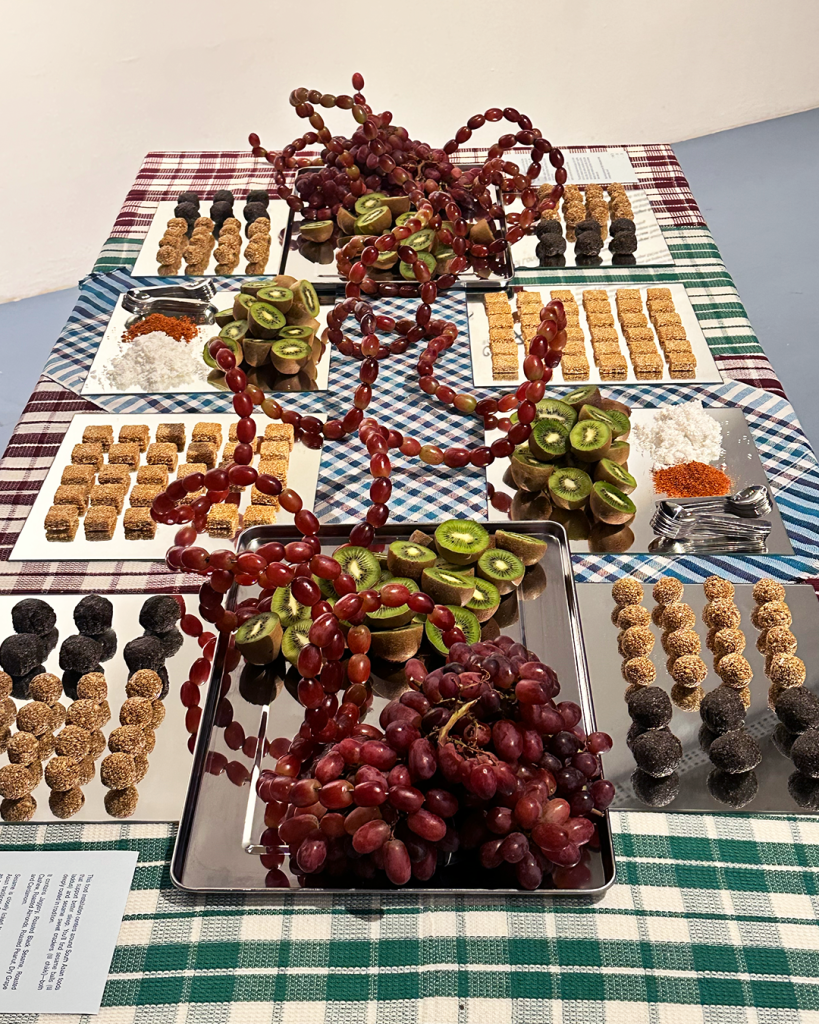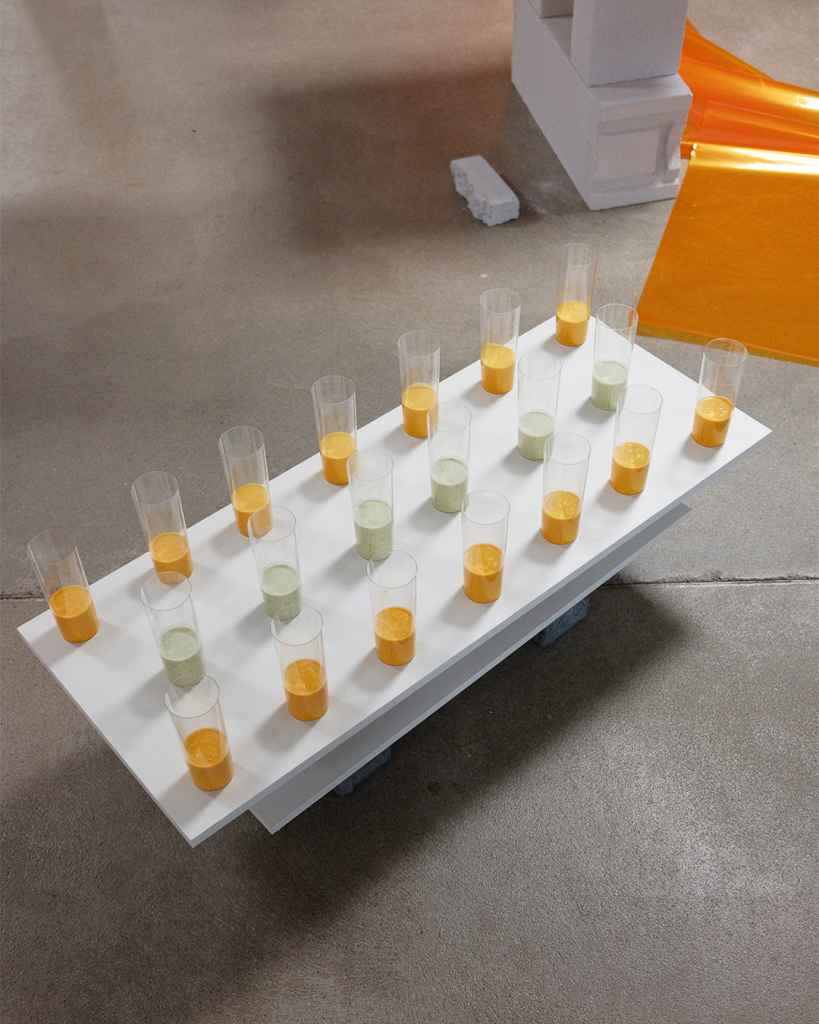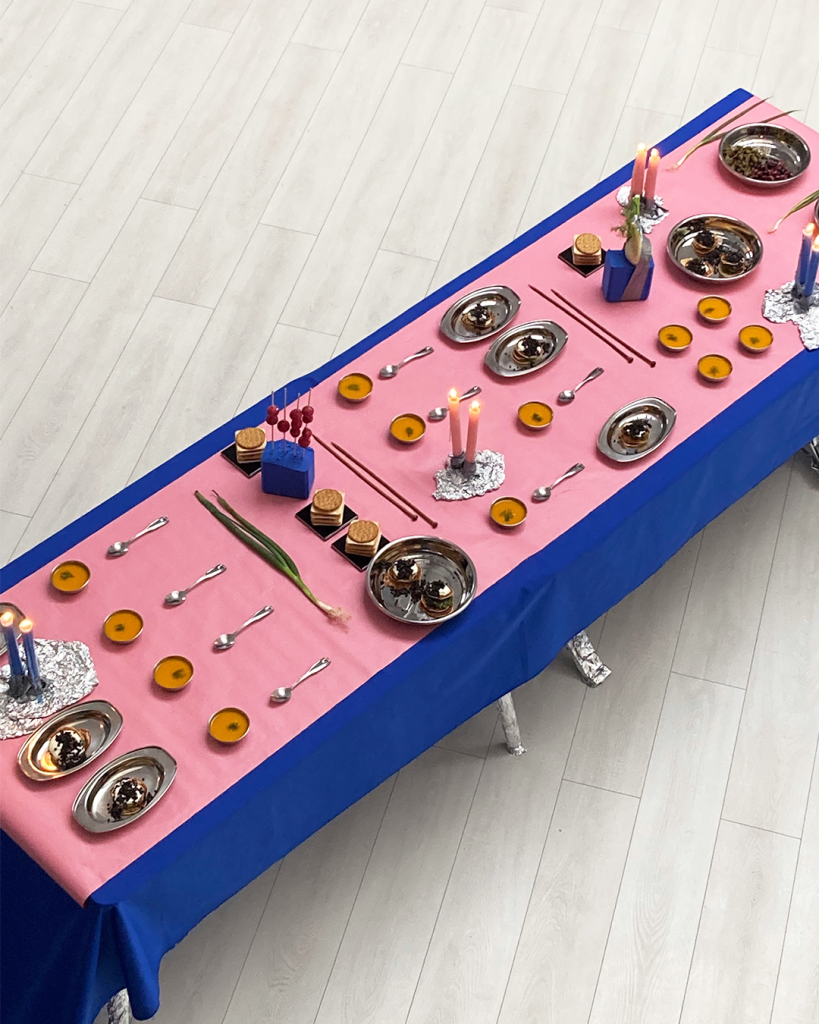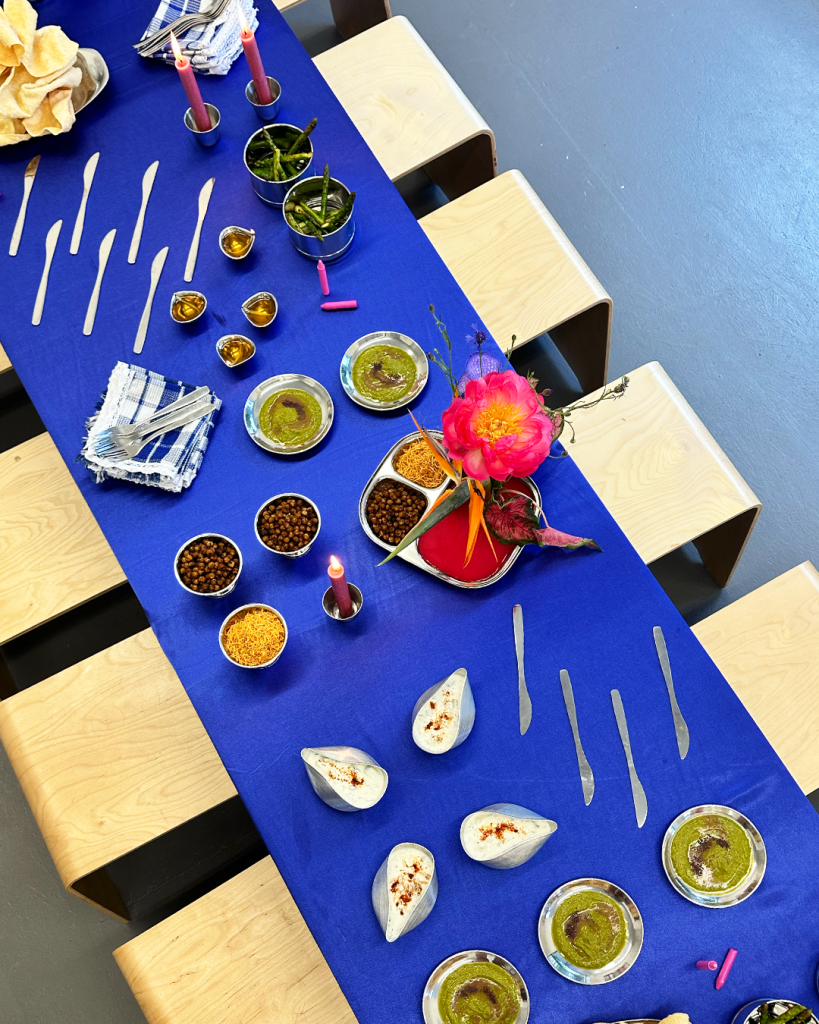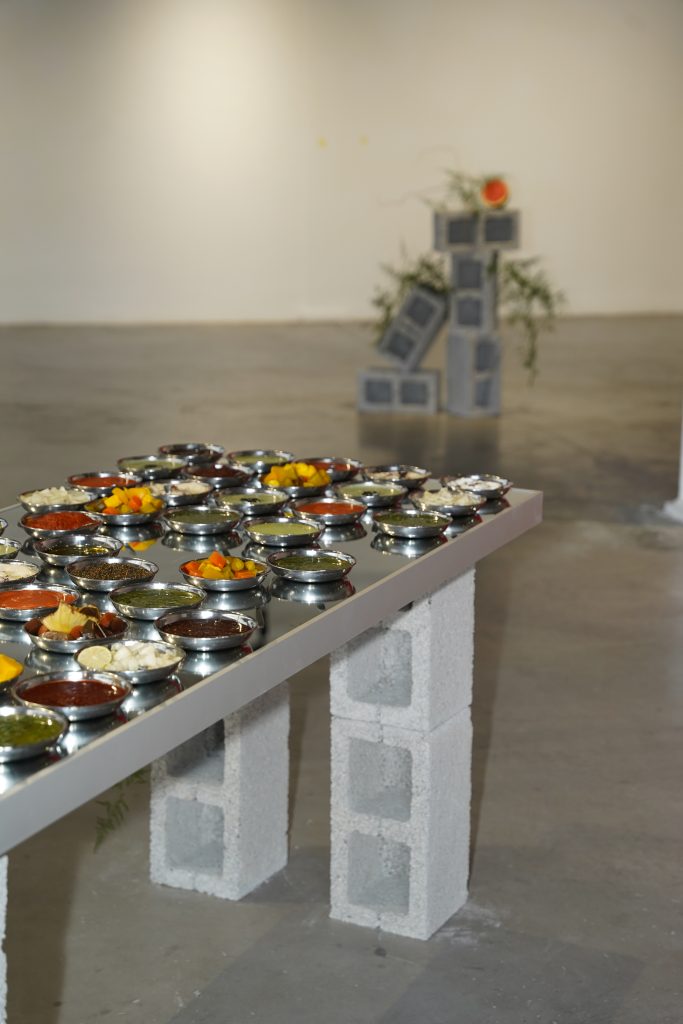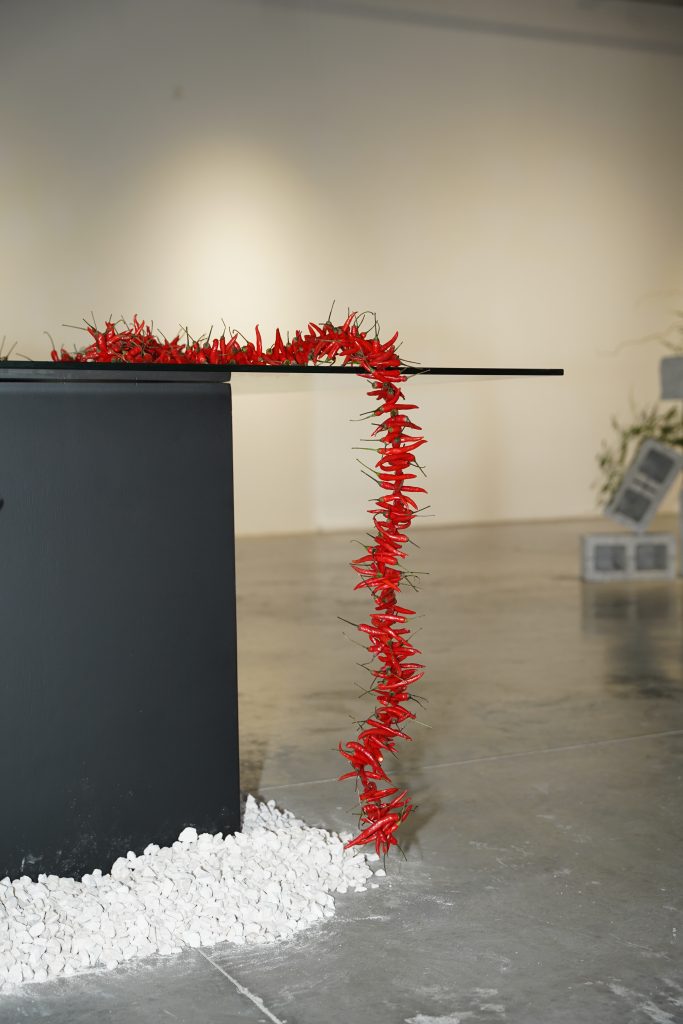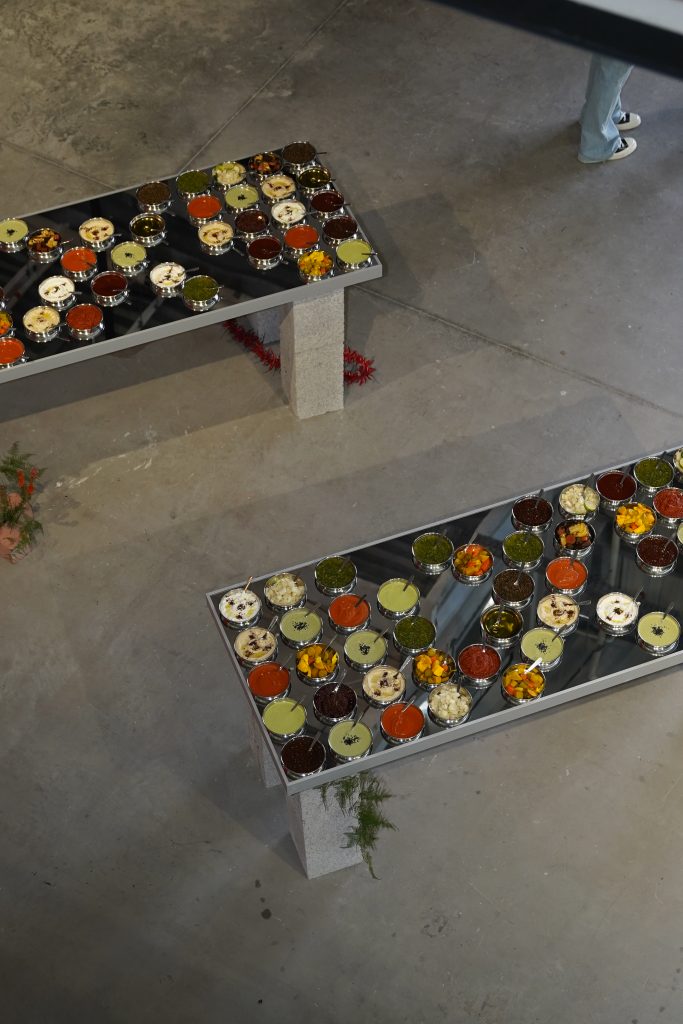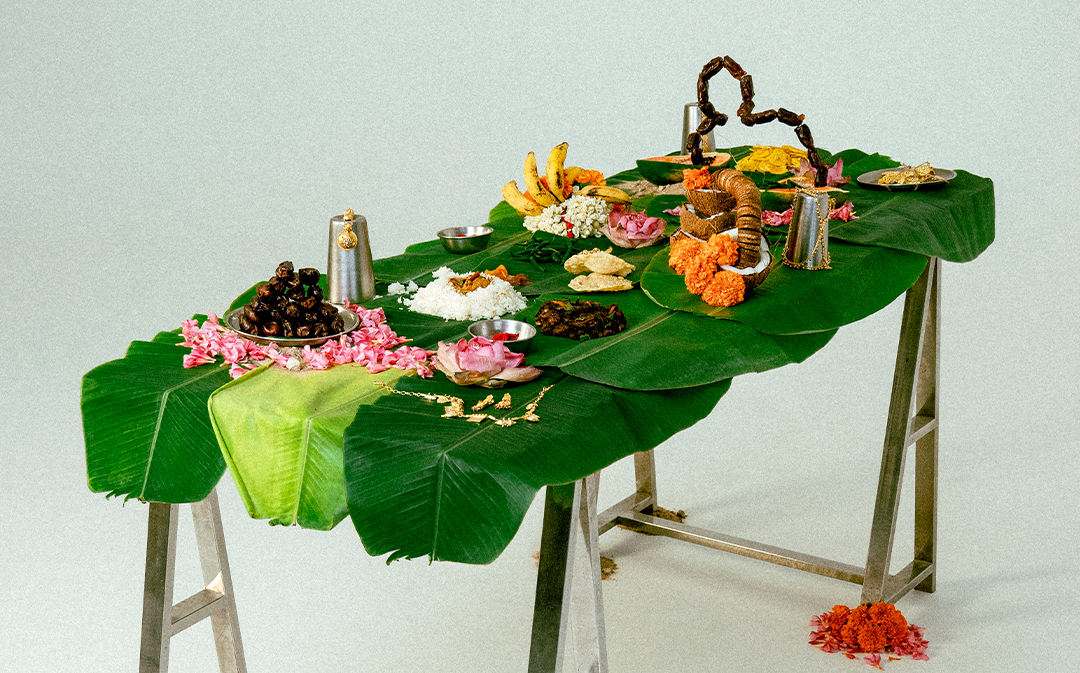
TABLES MADE OF CHUTNEY, MIRRORS AND SUBVERSION
Meet the artist serving identity, one bite at a time
In a world of carbon-copy dinner parties and Pinterest-perfect tablescapes, Akshita Garud’s creative studio Two Odd is sparking some serious chatter. No frosted cupcakes. No symmetrical napkin folds. And definitely no colour-coordinated charcuterie boards. Instead? Think: an art installation you can eat. A story you can smell. A memory you take home in your gut.
From afar, her tables look like a fever dream of modern Indian kitchens: mirror-topped surfaces balanced on cement blocks, scattered with chaats, pickles, powders, and enough stainless steel to make an Indian grandma proud. But don’t mistake this for nostalgia. Every element — from tangled garlands of red chillies to glossy grape sculptures — is doing something more subversive.

“I wanted to push back against the very homogenous, one-dimensional trope the West often uses to portray India,” she says. “It felt reductive — and it deeply impacted my already complicated relationship with my identity.”
So she started building new worlds — one table at a time. Worlds where India isn’t just colour and turmeric spills. Where banana leaves become both altar and tablecloth. Where aesthetics are rooted in sharp, South Asian textures.
“Our culture isn’t just bright colours and maximalism. There are so many different ways to represent it.”
Originally co-founded with wedding décor artist Sabah Shaikh during the pandemic, Two Odd began as a shared creative outlet — and a necessary existential reckoning. With a background in corporate creative roles, Akshita knew strategy, but missed the soul of creative work. The project gave her space to reclaim both – and like its name suggests, Two Odd is never quite what you expect.
“We weren’t trained artists, but we had a clear creative aesthetic. We didn’t fully belong to the art world or the food world — Two Odd lives in the blur.” That blur is where the magic lives. At her tables, food doesn’t just look good. It performs. It provokes. It holds space for grief, joy, contradiction — and the very human need to be seen.
“There’s always a theme. We’re obsessed with storytelling. That’s our biggest USP.” Past topics have taken on everything from toxic positivity to loneliness, aging, and soft power. Colour theory is a major tool in her storytelling too — especially soft, moody blues and the odd pop of surprise that jolts you out of visual habit.
But if you really want to see her practice in motion, look no further than the Identity Potluck — her signature series. A deeply personal food installation disguised as an art show, it invites multicultural creatives to unpack their sense of self through food. She listens. She interprets. And she plates their story — with spice, silence, and steel.
“It’s given me such a meaningful way to know people — beyond the surface. There’s so much honesty and resonance. And that’s what I crave most.”
Her events — hosted in Berlin, Mumbai, London, Barcelona and beyond — have become safe spaces. No networking. No name tags. Just real people and real stories. Because at Two Odd, the table isn’t just where you eat. It’s where the unsaid gets said.
And while she’s firmly rooted in her heritage, her taste skews contemporary — surreal, tongue-in-cheek, and always intentional. Case in point? Her soft spot for Gohar World: her maximalist soulmate in high-concept tableware.
Her events are intentionally small, emotionally open, and refreshingly unpretentious. You don’t need to know what fork to use. You just need to show up, stay curious, and maybe be willing to cry into your chutney. Because Akshita isn’t styling food. She’s igniting feeling. One that’s hard to pin down but impossible to forget.
“Supper clubs and shared tables feel more exclusive now than fine dining. People want meaning. They want honesty. And they want to feel less alone.”
We’ll eat to that.
